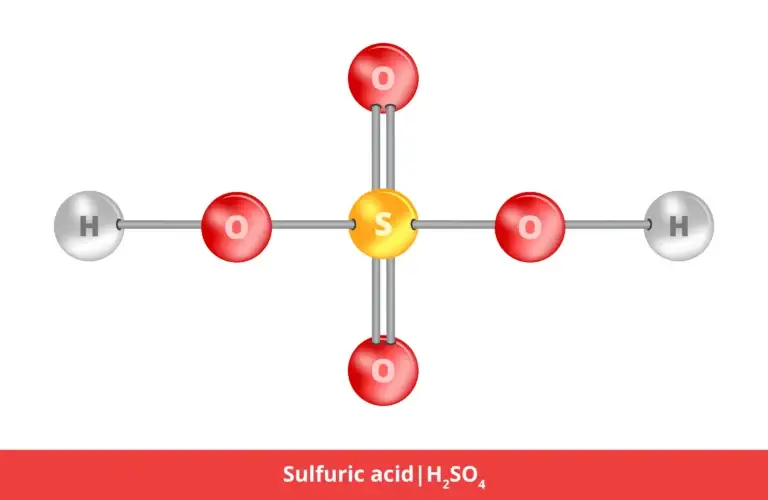Acid

Table of Contents
What is an Acid?
An acid is a substance that can donate a proton (hydrogen ion, H+) to another substance, typically a base, in a chemical reaction. They are characterized by their sour taste, ability to turn blue litmus paper red, and ability to react with metals to produce hydrogen gas.
Properties of Acids
Ionization
When an acid is dissolved in water, it undergoes ionization, breaking it apart into ions. For example, hydrochloric acid (HCl) dissociates into hydrogen ions (H+) and chloride ions (Cl-) in water. This ionization process allows acids to conduct electricity in solution, as the free ions can carry an electric current.
Strong acids like sulfuric acid (H_2SO_4) and hydrochloric acid ionize completely in water, meaning nearly all of their molecules dissociate into ions. Weak acids, on the other hand, such as acetic acid (CH_3COOH), only partially ionize. This results in a dynamic equilibrium between the undissociated acid molecules and the ions in the solution.
Strength
The strength of an acid refers to its ability to ionize in water. Strong acids completely dissociate into ions in solution, resulting in a higher concentration of hydrogen ions (H+), leading to a lower pH value.
Examples of strong acids include hydrochloric acid (HCl), sulfuric acid (H_2SO_4), and nitric acid (HNO_3). Weak acids, like acetic acid (CH_3COOH) and carbonic acid (H_2CO_3), partially dissociate in water, resulting in a lower concentration of hydrogen ions and a higher pH value compared to strong acids. The strength of an acid is determined by its chemical structure and the stability of the resulting ions after dissociation.
pH Scale
The pH scale is a logarithmic scale that measures the acidity or alkalinity of a solution. Acids have pH values below 7, with lower pH values indicating stronger acidity.
The pH scale is based on the concentration of hydrogen ions (H+) in a solution. A pH of 7 is considered neutral, meaning the concentration of hydrogen ions is equal to the concentration of hydroxide ions (OH-) in the solution.
Acids with pH values closer to 0 are stronger, while those closer to 7 are weaker. The pH scale is widely used in chemistry, biology, environmental science, and industry to measure and control the acidity of solutions.
Types of Acids
Acids can be classified into two main categories: mineral acids and organic acids. Mineral acids are inorganic compounds typically containing hydrogen and one or more non-metal elements.
Examples include sulfuric acid (H_2SO_4), hydrochloric acid (HCl), and nitric acid (HNO_3). Organic acids, on the other hand, are compounds containing carbon and hydrogen, often found in living organisms and organic matter.
Examples of organic acids include acetic acid (CH_3COOH) found in vinegar, citric acid (found in citrus fruits), and lactic acid (produced during fermentation). The distinction between mineral and organic acids is based on their chemical composition and origin.
Application of Acids
Acids have diverse applications across various industries and scientific fields. Strong acids like sulfuric acid produce fertilizers, detergents, and chemicals in industry. Hydrochloric acid is used for metal cleaning, water treatment, and pH adjustment in pools.
In laboratories, acids are used in analytical chemistry for titrations and pH measurements. In food and beverage industries, citric acid is used as a preservative and flavor enhancer, while acetic acid is essential in the production of vinegar.
Acids also play crucial roles in biological processes, such as digestion in the stomach (hydrochloric acid) and cellular metabolism (organic acids like citric acid). Overall, acids are fundamental compounds with a wide range of practical applications.
Related Links
Understanding pH Levels
Learn about Bases
Learn about Solutions
Chemical Reactions Explained